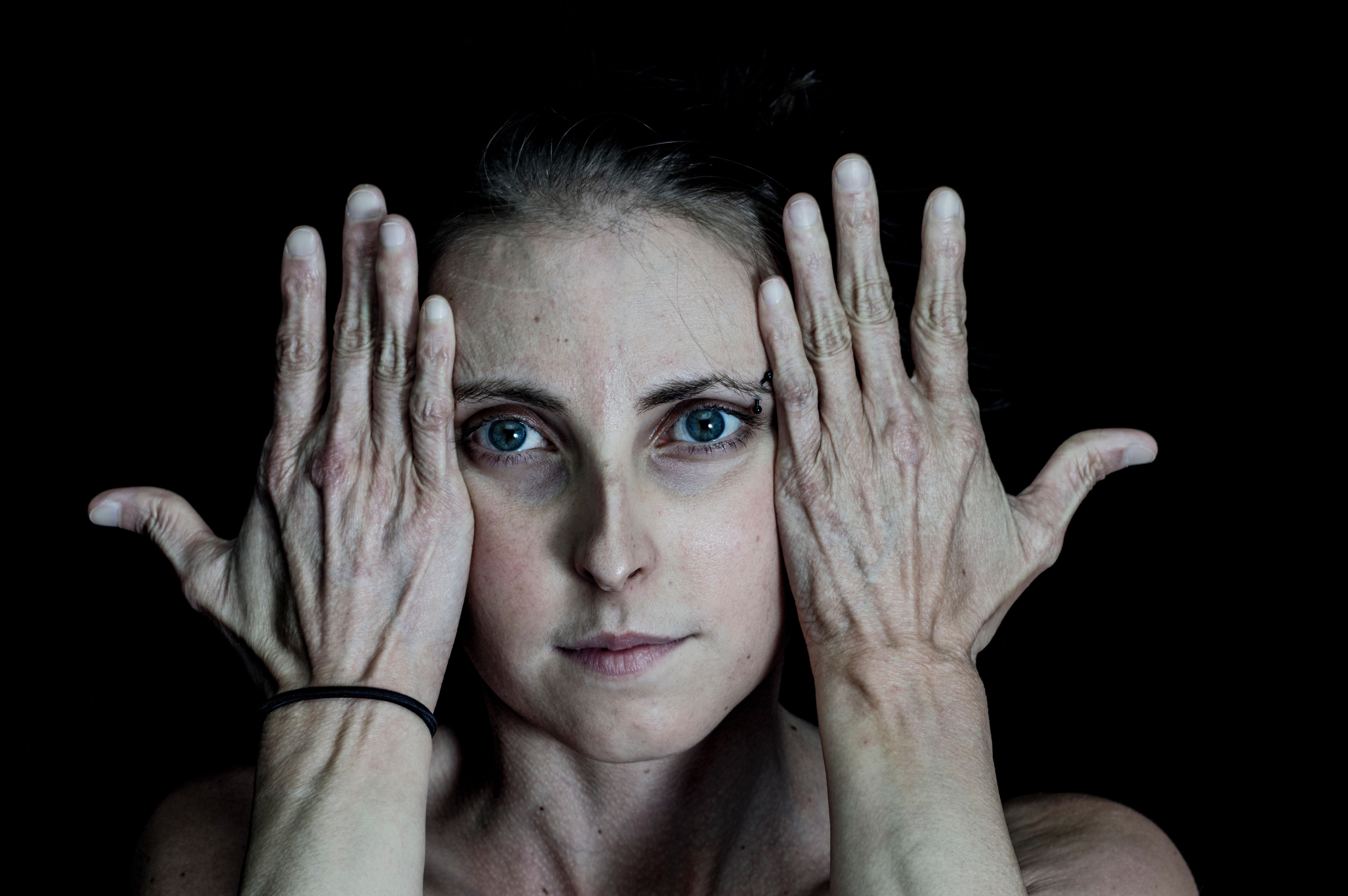In spring of 2016, I woke up with the worst neck pain I’d ever experienced and I had no idea what was causing it. A year – and several physicians, urgent care centers, and emergency rooms later, I ended up in a pain management center, convinced I would be living in agony for the rest of my life.
I then realized that in all those examinations, something critical had been missed. Going down the rabbit hole of my medical records led me back to a 2014 appointment, where I asked a geneticist, “could I have VEDS?”
At that time, I was told no one had VEDS – Vascular Ehlers-Danlos syndrome, a life-threatening genetic condition, and that I shouldn’t worry about it. But, when I stumbled upon the description of myself on the National Institute of Health’s page about VEDS in 2017, I was certain this is what I had. Everything matched up: easy bruising, translucent, fragile skin, an aged appearance to my hands, “double-jointed” fingers. Even my thin, tiny nose and my large eyes were there. And, if it turned out that I had VEDS, I had a life-shortening genetic condition that causes spontaneous arterial ruptures and organ ruptures, with no cure and a median life span of 48.
Despite several efforts to get genetic testing, I was dismissed. I called the geneticist I had seen in 2014 again, and begged them to pull my file. Results in May 2017 finally confirmed my suspicions. This diagnosis came just as I turned 28 years old.

A few months later, in September of 2017, my diagnosis of VEDS led to an answer for my intense neck pain: a dissection in my carotid artery, likely aggravated by physical therapy and intense stretching.
This put me in a very lonely place. I knew no one else with this disorder. I had no protocols, no support group of people who were facing the same daunting future. All that I had, I realized finally, was an answer – some finality and something definite to grab onto after years of uncertainty. And at that moment, the years of unanswered questions and dismissals – so frustrating for so long – lit a fire in me that’s still burning. I realized that I had to make sure no one else went through this alone.
I started a YouTube channel in July 2017 to share my experiences with others. Then, in 2018, I decided to start a podcast, interviewing other people with VEDS to shed light on our struggles and bring information to a wider group of people. At that point, driven by compassion for others and as a way to empower my own medical journey, I had become an activist without necessarily planning or meaning to.
As I moved forward with content for my platforms, my efforts began to take on momentum and weight. I become involved in a collaborative research project, called the VEDS Collaborative, with researchers at the University of Washington, where I met several other people affected by VEDS, and I also began to hear from people all over the world, some from as far away as Hong Kong and Israel. Because I had shared my own experience with VEDS, and because – in my story they recognized their own experience and their frustration with existing resources, they were compelled to reach out. I knew there was more to do, more assistance to provide, and a greater voice to be established for those who, like me, shared a diagnosis of VEDS.
Then, in 2019, I joined the Marfan Foundation to start a VEDS division in order to establish a program of support for those with VEDS, and to educate them, their families, the medical establishment, and those who could and would fund research to fight this critically under-addressed condition. Working together, we launched The VEDS Movement only a year ago, established a robust support and educational network, and we continue to grow and educate.
My story is about turning frustration and powerlessness into action and solutions. I want to share what I’ve learned about how to make that happen – and I also want to tell the stories of others who are living with VEDS so that more people who may be suffering, confused, and uncertain can gain some clarity, hope, and move forward towards working for a treatment, and someday, a cure.


